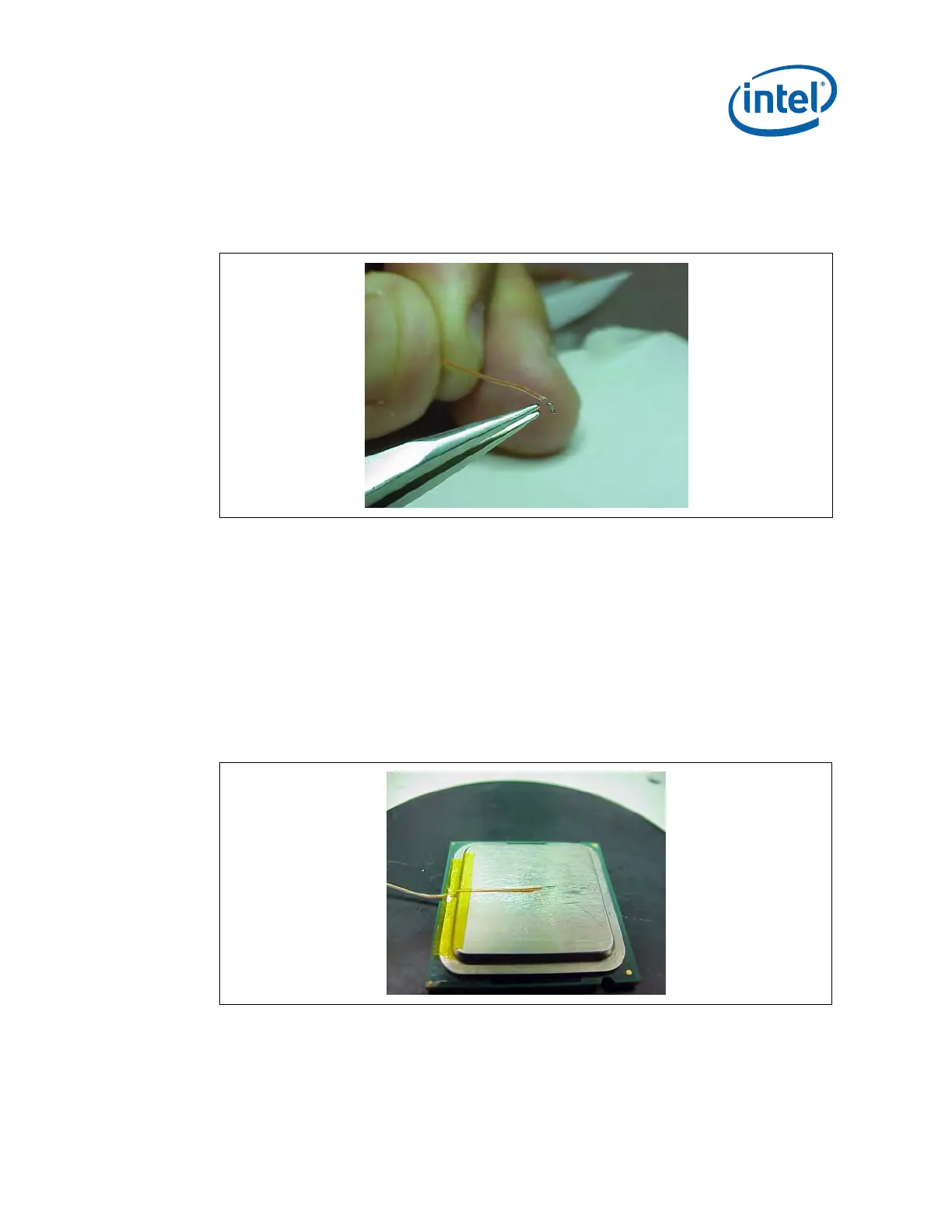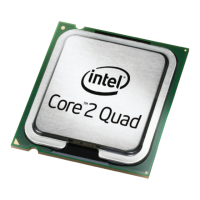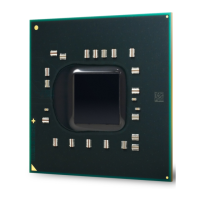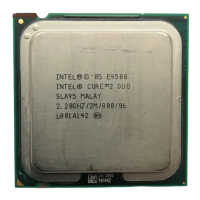Case Temperature Reference Metrology
Thermal and Mechanical Design Guidelines 83
5. Using the microscope and tweezers, bend the tip of the thermocouple at
approximately 10 degree angle by about 0.8 mm [.030 inch] from the tip
(
Figure 36).
Figure 36. Bending the Tip of the Thermocouple
D.5.2 Thermocouple Attachment to the IHS
6. Clean groove and IHS with Isopropyl Alcohol (IPA) and a lint free cloth removing
all residues prior to thermocouple attachment.
7.
Place the thermocouple wire inside the groove; letting the exposed wire and bead
extend about 1.5 mm [0.030 inch] past the end of groove. Secure it with Kapton*
tape (
Figure 37). Clean the IHS with a swab and IPA.
8. Verify under the microscope that the thermocouple wires are straight and parallel
in the groove and that the bead is still bent.
Figure 37. Securing Thermocouple Wires with Kapton* Tape Prior to Attach

